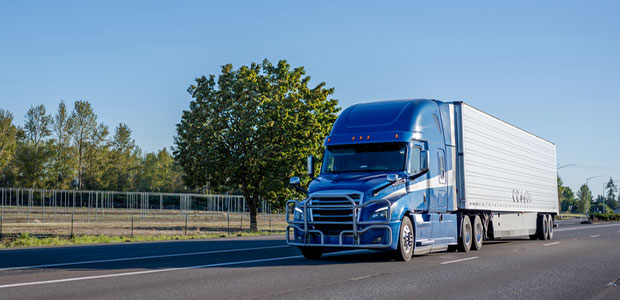
Five Potential Solutions to Driver Shortages
- By Devin Partida
- Jan 20, 2022
The U.S. is currently in the midst of a historic supply chain crisis, and recent events may worsen the situation. Controversy has sparked in response to a proposed COVID-19 mandate that would require employees of large companies to get vaccinated. While the order has not yet passed, many in the trucking industry have expressed frustration. According to estimates from the American Trucking Association, the nation is currently lacking more than 80,000 semi-truck drivers. Industry leaders were left in a difficult position when many drivers voiced intentions to quit their jobs should the vaccine mandate pass. What potential solutions could improve the situation and relieve the shortage?
1. Communication
The first step toward resolving concerns and fears surrounding the vaccine mandate is effective communication. News coverage related to the COVID-19 vaccines has been notoriously polarized and opinion-based. This makes it difficult for anyone to pin down reliable information on the topic, which increases distrust. Leaders in the trucking industry may be able to help by working with health officials to offer concrete information on COVID-19 vaccines. This may reassure skeptical drivers that the shots have been thoroughly tested and verified as safe. Of course, some drivers have medical conditions that prevent them from getting vaccinated, such as allergies. This increases the need for good communication. Should the vaccine mandate be passed, there needs to be a plan to ensure these truckers don’t lose their jobs.
2. Negotiation
Leaders within the trucking industry have already begun campaigning for mandate flexibility. Many point out that truck drivers largely work alone in the isolation oftheir cabs. This reduces their risk of contracting COVID-19 and spreading it to others. In interviews, U.S. Labor Secretary Marty Walsh has mentioned that truck drivers are likely to qualify for exemptions from the mandate. Labor department representatives have released statements with similar expectations. However, no official decision has been made on the matter.
Trucking industry leaders need to continue advocating for drivers in this regard. Shedding light on the calm, isolated nature of most drivers’ work routines may convince lawmakers that truckers are worthy of exemptions from the mandate. Currently, negotiations for an exemption appear to be the easiest strategy to retain truckers even if the order is passed.
3. Improved Pay
Leaders in the trucking industry have pointed out that paying drivers for all the hours they work may improve retention rates. Truckers can become frustrated by mile-based pay, which doesn’t include the time they spend getting their hauls loaded and unloaded, especially with long wait times at ports due to the supply chain crisis. Drivers who are already frustrated with this system may see the vaccine mandate as the last straw. Improving drivers’ compensation shows an appreciation for the long hours they put in to keep America’s supply chain functioning. Now, more than ever, industry leaders need to address the issue of pay if they want to retain drivers and attract new hires.
4. Updated Hiring Campaigns
The trucking industry is missing crucial opportunities to attract and hire young people, women, minorities and immigrants. For example, while women account for 47 percent of the total U.S. workforce, they make up less than seven percent of truck drivers. Female job-seekers could bring a wave of much-needed new hires to the sector. Similarly, industry veterans have pointed out that immigrants could be a good fit for trucking, especially if positions provided a pathway to citizenship.
Updating hiring campaigns to cater to these demographics could be just what the trucking industry needs right now. Offering financial assistance for new hires to get their licenses and training could also help bring in more drivers.
5. Autonomous Vehicles
There may be a technical solution to the driver shortage on the horizon. AI is already being used to support the supply chain in other areas, and now it is coming to trucking. Numerous autonomous semi-trucks have been in development over recent years, driven by advanced artificial intelligence and sensor technology. In late December 2021, autonomous trucking company TuSimple completed its first fully driverless road test, including a short haul. TuSimple is the first company to achieve this benchmark, giving hope to the trucking industry that self-driving trucks could soon be filling in the gaps.
Healing the Trucking Industry
The trucking industry is in the midst of some historic challenges. Hopefully, the most recent COVID-19 vaccine mandate is updated to account for the special circumstances of truck drivers. Regardless of the outcome, healing the roots of the driver shortage will build resilience, diversity and growth within this sector.